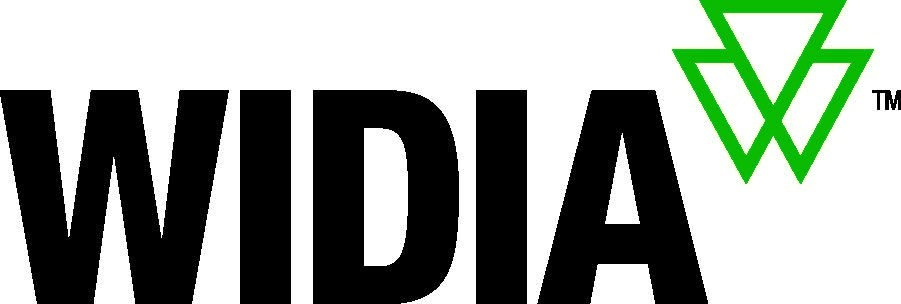
Born from the success of WIDIA's VariMill I and VariMill II end mills, the VariMill II ER end mill offers the performance of its predecessors but with features that enhance stability. Due to its success as a popular and effective custom solution, WIDIA is now making the VariMill II ER end mill available as an option in the standard product portfolio. Bringing this option into the standard portfolio provides customers with fast, easy, and accessible ordering options worldwide.
Like the VariMill II, VariMill II ER end mills are engineered with five unequally spaced flutes. However, unlike with the existing VariMill product line, the eccentric relief (ER) available with this new tool's cutting edges provides greater edge strength and enables high feeds and metal removal rates. The VariMill II ER end mill has a different taper core than VariMill I and II for increased stability, and also differs from those products because it's designed for center cutting.
VariMill II ER is the first off-the-shelf tool to offer SAFE-LOCK by Haimer, which provides excellent stability, eliminates pull out, and makes the tool more concentric, overall. SAFE-LOCK is available on tools greater than ½" (12mm) in diameter.
More than 100 VariMill II ER standard line items will be available globally in diameters from 3/8" to 1" (10mm to 25mm). Though primarily designed for roughing and finishing applications in the aerospace industry, VariMill II ER tools can be used as a solution for any titanium or stainless steel machining and are capable of slotting, ramping, and plunging.
Contact Details
Related Glossary Terms
- flutes
flutes
Grooves and spaces in the body of a tool that permit chip removal from, and cutting-fluid application to, the point of cut.
- milling machine ( mill)
milling machine ( mill)
Runs endmills and arbor-mounted milling cutters. Features include a head with a spindle that drives the cutters; a column, knee and table that provide motion in the three Cartesian axes; and a base that supports the components and houses the cutting-fluid pump and reservoir. The work is mounted on the table and fed into the rotating cutter or endmill to accomplish the milling steps; vertical milling machines also feed endmills into the work by means of a spindle-mounted quill. Models range from small manual machines to big bed-type and duplex mills. All take one of three basic forms: vertical, horizontal or convertible horizontal/vertical. Vertical machines may be knee-type (the table is mounted on a knee that can be elevated) or bed-type (the table is securely supported and only moves horizontally). In general, horizontal machines are bigger and more powerful, while vertical machines are lighter but more versatile and easier to set up and operate.
- relief
relief
Space provided behind the cutting edges to prevent rubbing. Sometimes called primary relief. Secondary relief provides additional space behind primary relief. Relief on end teeth is axial relief; relief on side teeth is peripheral relief.
- slotting
slotting
Machining, normally milling, that creates slots, grooves and similar recesses in workpieces, including T-slots and dovetails.

